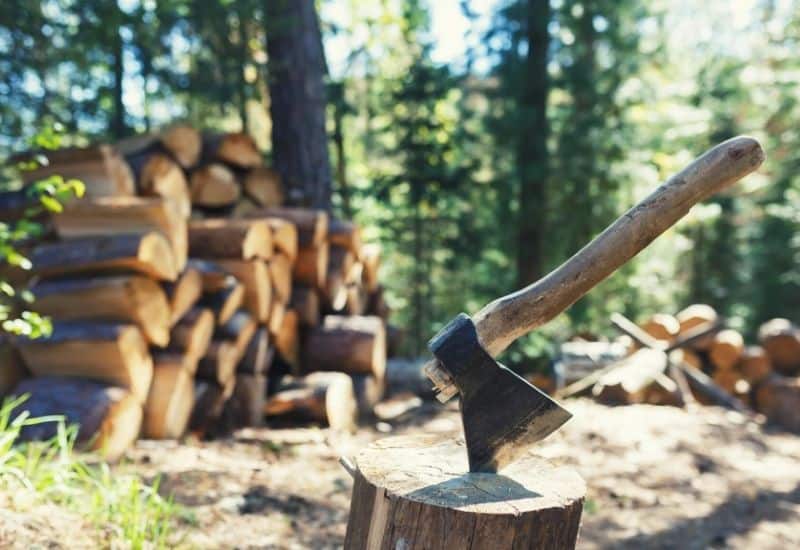The appropriate length of time for drying out or ‘seasoning’ wood for burning in your campfire isn’t clear cut. There are several variables to take into consideration, all of which can impact the prep time of your future fuel.
We provide an overview of those variables below, giving you the lowdown on expected drying times for different tree species, different environmental conditions, and different types of storage. We’ll also offer tips on how to store your wood the right way and how to gauge when it’s ready to burn.
Table of Contents
Factors That Influence Drying Time With Wet Wood or Green Wood
Tree Species
Every species is different, and how fast your wood takes to properly season will depend on the type of wood you have on your hands. Some species are denser than others, which means they often take longer to dry. Denser woods, however, will also produce more heat.
Generally speaking, softwood is lighter and less dense than hardwood, as the name suggests. While this means a lot more wood is needed for the same heat output, it also means that softwood dries quicker because moisture can dissipate quicker.
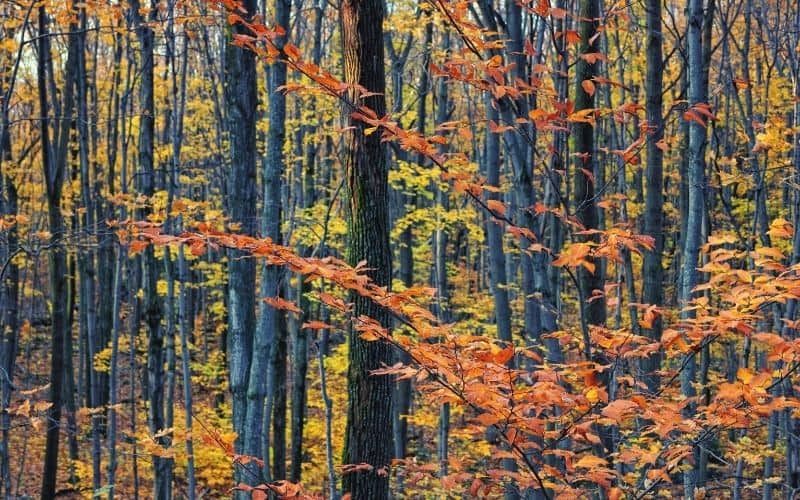
Moisture Content
The wood’s moisture content is another factor that significantly impacts how long it will take for the wood to dry. Fully-seasoned woods will have little to no moisture content and can burn much more efficiently than freshly cut firewood.
When wood isn’t given the time to fully season and still contains moisture, it has to use its energy to get rid of the water. Well-seasoned firewood, for this reason, will burn hotter, more efficiently, produce less smoke, and will even smell better!
Humidity and Ambient Temperature
The average humidity levels and temperatures in your local climate will also affect how long it takes to season green wood.
No matter where you live, wood will season quickest in early spring and summer. Even if you live in a very humid climate, however, it will still dry out if properly stored in humidity levels of up to 80% – just much slower.
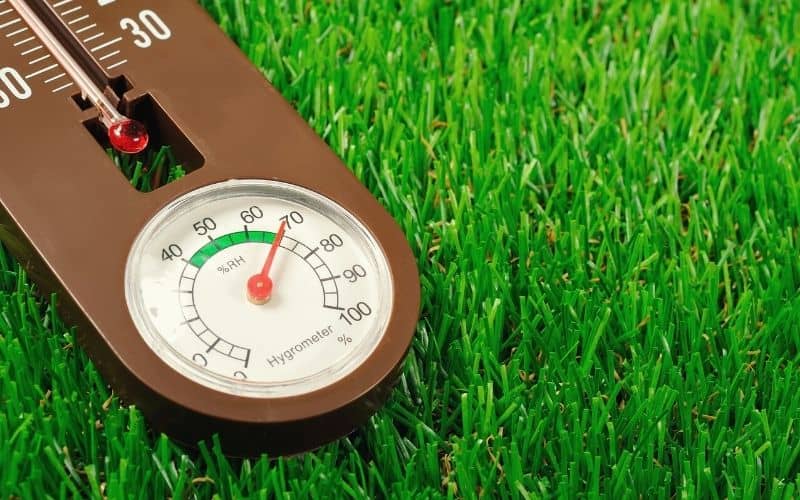
Storage
Properly storing and stacking firewood can speed up the seasoning process.
Here’s how it’s done:
- Raise it off the ground using pallets or other lumber
- Cover the tops of your logs properly
- Leave the sides exposed (yet still covered from weather)
Here’s why each of these steps is important:
- Splitting wood and leaving the sides open allows more airflow into the log
- Proper coverage prevents rain which delays the seasoning process
- Keeping the firewood stacked and raised from the ground provides air circulation to the entirety of your supply and helps avoid rot
How Can You Tell if Wood Is Dry Enough to Burn?
Visual Test
The visual test is a good first step in gauging whether or not you have lumber that’s dry enough to use in your fire.
As your logs dry, the bark loosens and eventually falls off, giving you the first indication that it is properly seasoned. The bark should be easy to peel off the log.
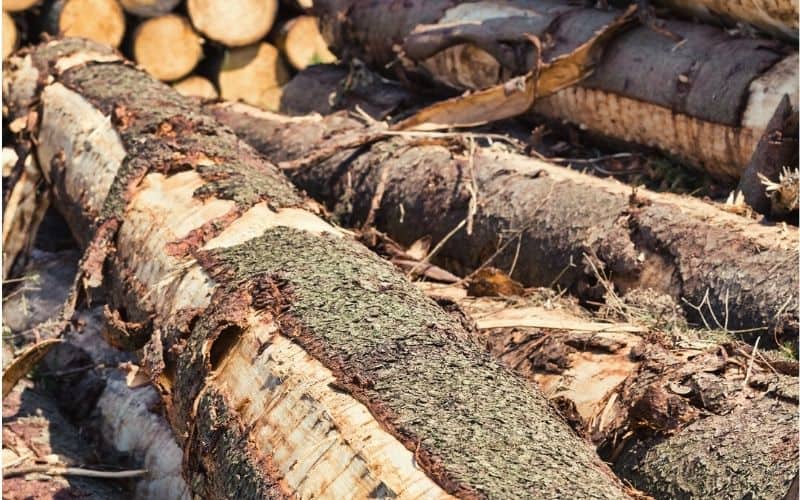
Your logs should be odorless, cracked at each end, have no obvious signs of fungus or mold, and be much lighter in color. Take two pieces from the same pile and hit them together – a dull thud is another sign they’re ready for burning. If you observe all or most of these things you can move on to the next tests to be sure your wood is seasoned.
Weight Test
As your wood starts to season and dry over time, it will start to lose moisture and, therefore, lose weight. If you have softwood, the weight difference will be much more noticeable as softwoods tend to hold more water than hardwood.
If guesswork isn’t enough for you, this chart provides all of the information needed for a more accurate answer.
Use a Moisture Meter
A moisture meter is the most reliable on our list as it gives you the ability to directly test the moisture level of wood. A moisture meter will also give you a more accurate reading. After putting your meter into dry wood, your readings should be below 20% and somewhere between 10-20%.
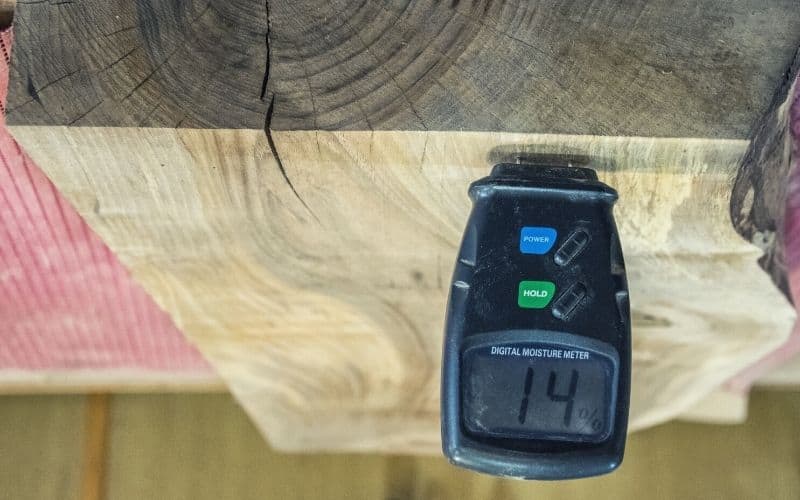
Moisture Meters can be purchased at most hardware stores or woodworking suppliers.
How to Dry Firewood: Three Stages of the Drying Process
This can be summed up in three simple stages: split, store, and season.
1. Split
Splitting wood is a great way to help along the process of drying firewood. Split wood dries quicker because the split log’s moisture can escape and evaporate more easily, and the interior of the log is exposed to ambient air.
2. Store
Correct storage is probably the most important part of seasoning. If you don’t stack the logs properly, they won’t dry well and you could be left with half-seasoned or entirely unseasoned firewood. Make sure your stash is entirely covered, raised from the ground, and has enough airflow to avoid damp and rot.
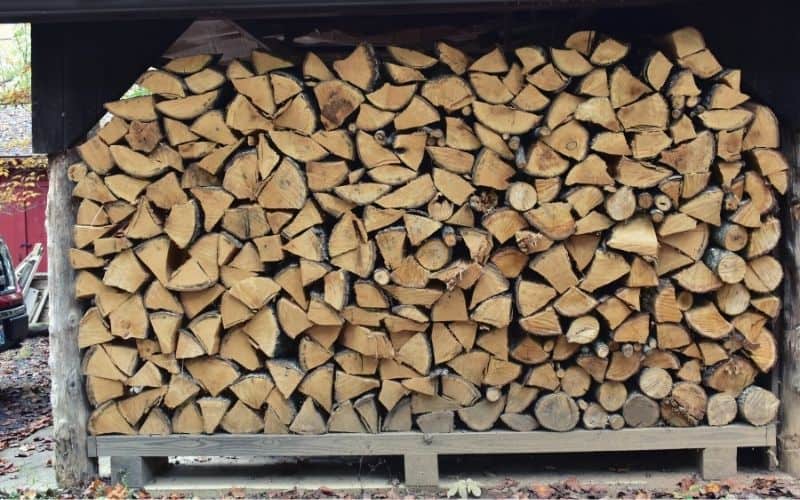
3. Season
Get your calendar out, mark the date when you expect your wood to be fire-ready, then bide your time before burning.
So, How Long Does Firewood Take to Dry?
On average, fresh green wood will take anywhere from 6-months to 2-years to fully dry and season. But, as you may know after reading all of the above, this may vary depending on where you live on the species of wood you have.
While there are too many variables to give a more specific time frame, the tips above will let you gauge more accurately when you are good for burning wood!
Drying Firewood FAQs
1. Is it OK for firewood to get rained on?
Generally, it is not okay for your wood to get rained on. That’s why you should always cover and stack it properly. Constant exposure to wet conditions will cause your wood to rot, especially if you don’t keep it elevated from the ground. Also, wet wood produces much more smoke and produces less heat.
2. Why is it important to burn only dried wood?
Wood with high moisture content creates much more smoke and harmful byproducts. It also doesn’t burn as efficiently as energy is wasted getting rid of moisture. Burning dry wood only, therefore, should always be your goal. Attempting to burn wood that isn’t fully dry, of course, also makes it hard to get your fire started.
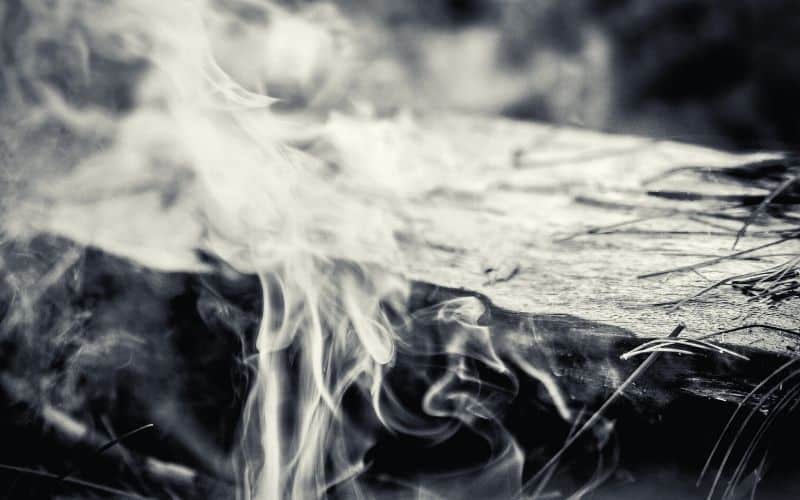
3. Can I speed up the drying process/seasoning firewood process?
To get dry wood faster, you should split it into two pieces immediately. Stack the wood loosely with room for heat and air to circulate around all of the pieces. Sun exposure can also increase the time it takes for wood to dry, but making sure all logs get enough air is key.
Final Thoughts
Whether you need to start a fire to heat your home in winter or are just going camping for a few days, a ready-to-roll batch of seasoned wood is always good to have! We hope the above tips will help you know when your batch is ready for burning and speed up the seasoning process!
If you have any questions about how long firewood takes to dry or season, we’d love to hear from you. Ask away in the comments box below!
